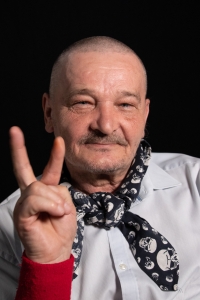He would paint John Lennon on a wall. And he would break boys’ fingers deliberately to keep them out of the army

Download image
Josef Maraczi was born on 13 June 1955 in Kladno. His mother was from Slovakia, and his father from Hungary. His father worked as a circus performer and traveled with the Berousek circus. He grew up in Western Bohemia, in Stříbro, in a troubled family, his parents left him several times in an orphanage or in a sanatorium . He was trained as a painter - decorator and from his childhood he liked painting and fine arts. From 1980 he lived in Prague, where he established close connections with the dissident movement. He created protest banners, T-shirts and other items for several independent peace movements, which were connected to samizdat publishing and his artistic activities. He created stencils of John Lennon and used them to paint on walls in Prague’s Kampa, never being caught. He also took part in the regular gatherings at the John Lennon Wall, which gradually turned into an anti-government demonstrations suppressed by the security forces and the police. He collaborated on a number of samizdat magazines such as Vokno and JazzStop, he printed declarations for several independent peace associations and created several punk magazines such as 10 Years Flexidisc and Attack. After 1989, he became a member of a screening committee that assessed the involvement of members of the security forces in human rights violations. He made his living as an editor in several post-revolution media and devoted himself to his art. At the time of the interview he was living in Prague (June 2022).












